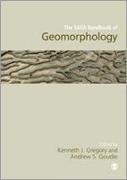- Start
- The Sage Handbook of Geomorphology
The Sage Handbook of Geomorphology
Angebote / Angebote:
Geomorphology is the study of the Earth's diverse physical land-surface features and the dynamic processes that shape these features. Examining natural and anthropogenic processes, The SAGE Handbook of Geomorphology is a comprehensive exposition of the fundamentals of geomorphology that examines form, process, and applications of the discipline.
Organized into five substantive sections, the Handbook is an overview of:
. Foundations and Relevance: including the nature and scope of geomorphology, the origins and development of geomorphology, the role and character of theory in geomorphology, geomorphology and environmental management, and geomorphology and society
. Techniques and Approaches: including observations and experiments, geomorphological mapping, the significance of models, process and form, dating surfaces and sediment, remote sensing in geomorphology, GIS in geomorphology, biogeomorphology, human activity
. Process and Environment: including the evolution of regolith, weathering, fluids, flows and fluxes, sediment transport and deposition, hill slopes, riverine environments, glacial geomorphology, periglacial environments, coastal environments, aeolian environments, tropical environments, karst and karst processes
. Environmental Change: including landscape evolution and tectonics, interpreting quaternary environments, environmental change, disturbance and responses to geomorphic systems
. Conclusion: including challenges and perspectives, and a concluding review
The Handbook has contributions from 48 international authors and was initially organized by the International Association of Geomorphologists. This will be a much-used and much-cited reference for researchers in Geomorphology, Physical Geography and the Environmental Sciences.
Fremdlagertitel. Lieferzeit unbestimmt




